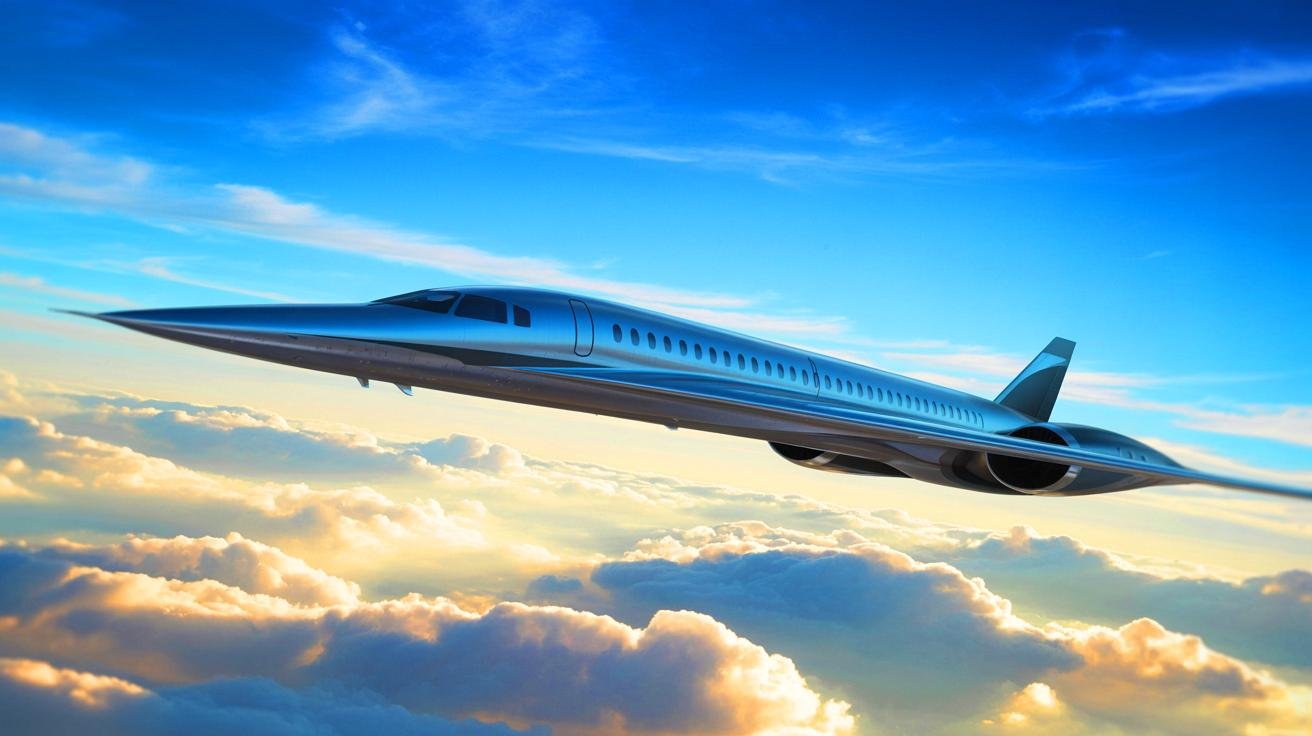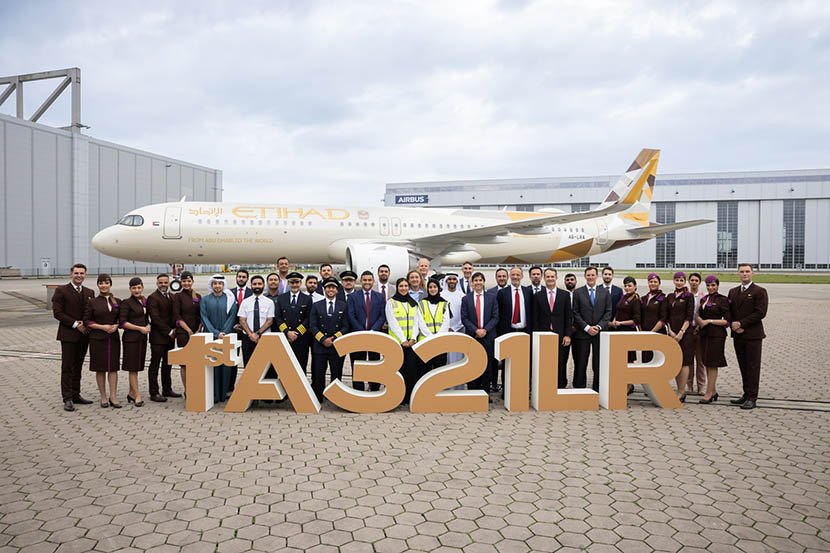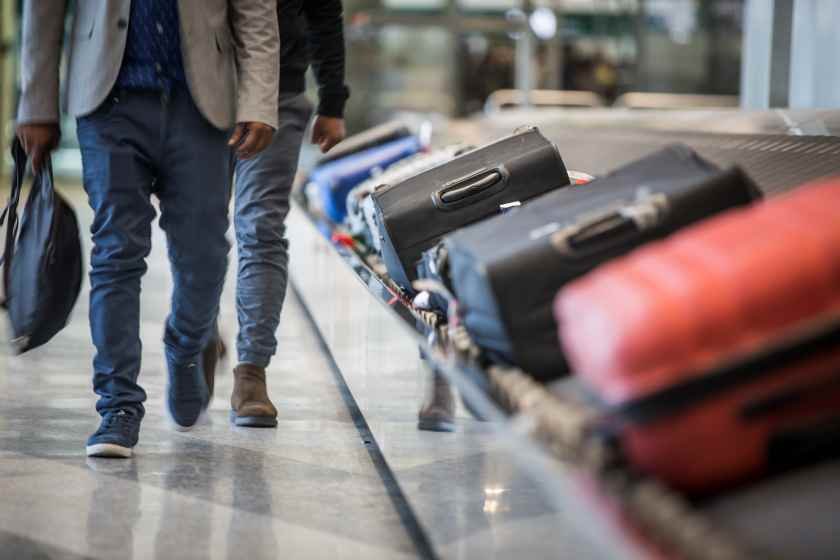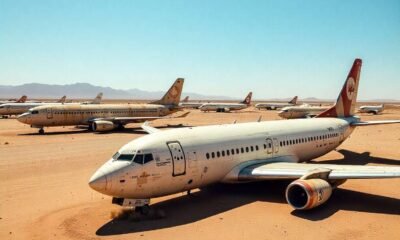Flight Buzz
Hong Kong Airlines Enhances Regional Connectivity with New Flights to Lijiang, Providing Travelers with Direct Access to Yunnan’s UNESCO Heritage Sites

Thursday, July 24, 2025
Hong Kong Airlines is improving its route network to capture new and emerging demand by commencing direct flight to Lijiang with effect from 8 September 2025. This new route offers travelers direct and easy access to Yunnan’s multitude of UNESCO World Heritage sites, such as the well-preserved Lijiang Old Town – as well as striking natural landscapes like Jade Dragon Snow Mountain and Tiger Leaping Gorge. The only carrier to operate direct services between Hong Kong and Guiyang, Hong Kong Airlines is reinforcing its growing network of mainland China and providing leisure and business travelers with a new and convenient destination to travel in China that boasts one of the nation’s most historically and culturally rich legacies.
Hong Kong Airlines is set to elevate its regional connectivity by launching a new direct service to Lijiang, a historical and cultural gem in Yunnan Province. Starting 8 September 2025, the airline will operate three weekly flights, providing travelers with exclusive access to this UNESCO World Heritage site. As the only carrier operating this route, Hong Kong Airlines is not only enhancing its mainland China network but also offering passengers an opportunity to explore Lijiang’s rich heritage and breathtaking landscapes.
Located in the northwestern part of Yunnan, Lijiang holds a central place in China’s history. It was a vital hub on the ancient Silk Road and the Tea Horse Road, contributing significantly to cultural exchange between China and the world. Over the centuries, Lijiang has preserved its heritage and charm, earning it the designation of a National Historical and Cultural City of China. The city’s unique location on a high-altitude plateau provides a mild, spring-like climate, making it an ideal year-round destination, with autumn and spring offering particularly scenic views.
A Gateway to Yunnan’s Majestic Attractions
Lijiang’s fascinating mix of history, culture, and nature attracts both domestic and international tourists. The city’s most famous attraction, the UNESCO-listed Lijiang Old Town, draws visitors with its cobbled streets, ancient architecture, and vibrant market squares. The town’s well-preserved Naxi culture, including the traditional architecture from the Ming and Qing dynasties, offers a window into China’s past. For travelers seeking an authentic cultural experience, wandering through the streets of Lijiang Old Town is a must.
Beyond the town’s historic streets, Lijiang is home to several natural wonders. The majestic Jade Dragon Snow Mountain, one of the highest peaks in the region, stands tall as a symbol of Lijiang’s scenic beauty. Visitors can enjoy panoramic views of the snow-capped mountains, and at the base of the mountain, they can indulge in yak meat hotpot—a specialty that reflects the unique flavors of the region.
For those looking to explore more ancient sites, the nearby Shuhe Ancient Town and Baisha Ancient Town offer additional layers of Lijiang’s rich heritage. Baisha is the oldest town in the region and is famous for its exquisite Baisha Murals, which depict the city’s artistic legacy. Nature enthusiasts will also find solace in the breathtaking Tiger Leaping Gorge, one of the world’s deepest canyons, located between Lijiang and Shangri-La. This dramatic landscape attracts adventurers from around the globe and is a must-see for anyone visiting the region.
Strengthening Hong Kong Airlines’ Mainland China Network
Hong Kong Airlines’ expansion into Lijiang underscores its commitment to meeting the growing demand for travel within China. Following the successful launches of services to Hulunbuir and Xi’an, Lijiang becomes the airline’s third new destination in mainland China this year. This move reflects the airline’s ongoing strategy to enhance its network in China and provide more diverse travel options for its passengers.
Lijiang’s growing popularity as a tourism destination makes this new route a timely addition to Hong Kong Airlines’ portfolio. The airline’s direct flights will not only serve tourists eager to explore the city’s historical and natural attractions but also benefit business travelers seeking to connect through Hong Kong to major global destinations. Hong Kong Airlines’ network already includes long-haul routes to cities like Sydney and Vancouver, and the new Lijiang service will facilitate convenient connections for passengers traveling from these international locations.
Efficient and Convenient Flight Schedule
The new Hong Kong-Lijiang service will be operated by Airbus A320 aircraft, offering a comfortable and efficient travel experience. The flight schedule has been designed to cater to the needs of both leisure and business travelers, with convenient timings that enable smooth connections to Hong Kong’s extensive international network.
Hong Kong to Lijiang (HX412)
- Departure: 19:50
- Arrival: 22:45
- Frequency: Monday, Wednesday, Friday
Lijiang to Hong Kong (HX413)
- Departure: 09:05
- Arrival: 11:55
- Frequency: Tuesday, Thursday, Saturday
The carefully crafted schedule ensures that passengers can easily connect to long-haul flights to destinations such as Sydney, Vancouver, and beyond, positioning Hong Kong as a critical international aviation hub.
Hong Kong Airlines’ Commitment to Passenger Experience
With the introduction of this new route, Hong Kong Airlines continues to demonstrate its dedication to providing excellent service and enhanced travel options for its customers. The airline’s new Lijiang flights are designed to meet the evolving needs of travelers, offering not only easy access to one of China’s most captivating destinations but also convenient connections for those traveling to and from international destinations.
The service is part of Hong Kong Airlines’ broader strategy to expand its footprint in China and offer more diverse travel choices to its growing customer base. The airline’s growing presence in mainland China demonstrates its commitment to enhancing passenger convenience and supporting the demand for both business and leisure travel in the region.
Hong Kong Airlines will boost its regional network with the launch of direct flight services to Lijiang with effect from 8 September 2025. This convenient service provides access for travelers to the a UNESCO World Heritage sites in Yunnan, and strengthens the airline’s mainland China network.
New direct flights from Hong Kong Airlines allow passengers to discover one of China’s most historically and culturally significant cities Hong Kong Airlines offers an amazing way to see Lijiang. With its blend of old world appeal, contemporary connectivity and breath-taking natural splendour, Lijiang is all set to open its doors and welcome in the tourists of the world. “Hong Kong Airlines visitors will be the first airline passengers in the world to get access to this prestigious UNESCO world heritage site, as the local government only opened direct air access for airlines let alone commercial tourists a year ago. The new service not only further strengthens the airline’s network in mainland China but also consolidates Hong Kong’s role as a leading international aviation hub. For history, culture, nationalities and nature, Lijiang will be an unforgettable experience for any tourist.
Flight Buzz
White House Order Could Bring 3-Hour New York to LA Flights by 2027 and Reignite Fierce Debate Over Sonic Booms and Elitist Air Travel

| IN A NUTSHELL |
|
In a groundbreaking development, supersonic commercial travel is poised for a comeback in the United States. A new executive order has lifted a 52-year ban on overland commercial supersonic flights, promising to revolutionize the way we travel across the country. This decision, announced on June 6, marks a pivotal shift in aviation policy and sets the stage for a new era where coast-to-coast travel could be cut nearly in half. This article delves into the history, technology, and future implications of supersonic travel.
The History of Supersonic Flight
Supersonic flight has long been a dream of the aviation industry, with roots tracing back to the mid-20th century. Before the ban, the U.S., France, the United Kingdom, and the Soviet Union were at the forefront of developing commercial supersonic aircraft. However, these endeavors were halted due to the deafening noise produced by these aircraft, which resulted in widespread public concern and eventual regulatory action. The U.S. Federal Aviation Administration (FAA) banned overland supersonic flights in 1973, effectively stalling the progress of supersonic commercial aviation.
The Soviet Union’s Tu-144, for example, relied heavily on loud afterburners to achieve speeds exceeding Mach 1, contributing to the negative public perception of supersonic travel. Despite these challenges, the desire for faster travel endured, leading to continued research and development efforts.
Breakthroughs in Supersonic Technology
Today, innovative technologies are paving the way for the resurgence of supersonic flight. Companies like Boom Supersonic have developed “boomless cruise” technology, allowing aircraft to fly above 30,000 feet and reach Mach 1 without generating disruptive ground-level noise. This achievement, known as Mach cutoff, was demonstrated in a test flight in January 2025, where sonic booms were successfully dissipated before reaching the ground.
Additionally, the X-59 supersonic demonstrator jet, developed by Lockheed Martin in collaboration with NASA, features engines placed on top of the fuselage. This design helps limit shock waves and minimizes the noise impact on the ground. Such advancements represent significant strides towards the realization of commercial supersonic travel.
Regulatory Developments and Timelines
The new executive order establishes a clear timeline for the introduction of supersonic flights in the U.S. The directive mandates the repeal of prohibitions on supersonic flight by December 3, 2026, with noise certification standards to follow by December 6, 2026. The final implementation of these rules is expected by June 6, 2027. This aggressive timeline mirrors the pace of regulatory changes seen in other sectors, such as commercial drone usage, which went from government mandate to final implementation in just four years.
These regulatory developments reflect a growing recognition of the potential benefits of supersonic travel, including reduced travel times and enhanced connectivity. The introduction of noise-based certification rules aims to address previous concerns, ensuring that the reintroduction of supersonic flights is both feasible and sustainable.
The Future of Supersonic Travel
As we look towards the future, the reemergence of supersonic travel holds tremendous promise. The ability to travel from New York to Los Angeles in just 3.5 hours could transform the landscape of domestic travel, offering unparalleled convenience and efficiency. This shift could also have significant implications for business travel, tourism, and the broader U.S. economy.
However, challenges remain. The development and deployment of supersonic technology require substantial investment, and there are ongoing debates around environmental impacts and infrastructure needs. Despite these hurdles, the potential rewards are immense, offering a glimpse into a future where speed and efficiency redefine the way we connect.
As supersonic travel edges closer to becoming a reality, the world watches with anticipation. Will this technological leap usher in a new golden age of aviation, or will it face new challenges that must be overcome? The answers to these questions will shape the future of travel in ways we can only begin to imagine.
This article is based on verified sources and supported by editorial technologies.
Did you like it? 4.5/5 (23)
Flight Buzz
Etihad joins JetBlue, Icelandair, Aer Lingus, Air Astana in ordering new premium narrowbody flights, Latest update you need to know

Sunday, July 27, 2025
Etihad Airways has joined the ranks of JetBlue, Icelandair, Aer Lingus, Air Astana, and Air Transat by ordering premium narrowbody flight travel. This significant move marks a new era in the airline’s fleet strategy, expanding its capabilities to serve both short and long-haul routes with enhanced luxury. By incorporating the Airbus A321LR into its fleet, Etihad is aligning with other global airlines that are increasingly adopting premium narrowbody aircraft for their operations.
The decision to embrace this aircraft comes at a time when the demand for more efficient, yet luxurious, flight options is rising. Just like JetBlue and Icelandair, Etihad sees the potential to offer passengers an elevated experience on narrowbody planes with premium cabins and innovative features typically reserved for widebody aircraft. Similarly, Aer Lingus, Air Astana, and Air Transat have already begun to take advantage of the A321LR’s extended range and fuel efficiency, combining operational flexibility with exceptional passenger comfort.
Incorporating the A321LR into its fleet, Etihad will now be able to offer its signature luxury experience across more destinations, enhancing its service offering for both leisure and business travelers. With this new addition, Etihad follows in the footsteps of other forward-thinking carriers, ensuring that passengers enjoy a premium flying experience on narrowbody routes.
Etihad Airways’ First Airbus A321LR Takes Off: A New Era in Premium Narrowbody Travel
Etihad Airways has recently taken delivery of its first Airbus A321LR, marking a transformative milestone in the airline’s fleet expansion. This new aircraft promises to redefine narrowbody travel by bringing the premium experience typically reserved for long-haul flights to short and medium-haul routes. With luxury cabins and innovative features, Etihad is setting a new standard in single-aisle aviation, and this is just the beginning.
A New Era for Etihad Airways
The delivery of Etihad’s first Airbus A321LR represents a pivotal moment in the airline’s journey. This aircraft is the first of 30 A321LR aircraft that will join the fleet as part of the airline’s growth strategy. The A321LR is a game-changer for Etihad, as it offers the same luxurious experience typically found on widebody aircraft but within a single-aisle plane. This delivery signals the airline’s commitment to providing passengers with top-notch service and comfort, whether flying short or long-haul routes.
Etihad’s Chief Executive Officer, Antonoaldo Neves, expressed the significance of the aircraft, stating, “Today marks an extraordinary moment for Etihad as we welcome an aircraft that changes everything we thought possible on a single-aisle plane.” This aircraft allows Etihad to expand its network while maintaining the premium experience their guests expect.
Redefining Narrowbody Travel with the A321LR
One of the standout features of the Airbus A321LR is its three-cabin configuration, which includes the first-ever narrowbody First Suites. These private, enclosed spaces are a first for Etihad on narrowbody aircraft, offering passengers an unparalleled level of privacy and comfort. Each suite includes a fully-flat bed, sliding doors, and bespoke design touches, creating an environment typically reserved for long-haul flights. Additionally, the First Suites are equipped with a 20-inch 4K screen, Bluetooth pairing, wireless charging, and ample space for a companion to join.
The Business cabin on the A321LR is equally impressive, featuring 14 seats arranged in a 1-1 herringbone layout. This configuration ensures that every passenger has direct aisle access and enjoys a window view. The seats are equipped with a 17.3-inch 4K screen, Bluetooth headphone pairing, and wireless charging, providing passengers with the same level of comfort found in widebody business class cabins.
Etihad also paid special attention to Economy class, where 144 seats are designed to offer maximum comfort on short and medium-haul flights. Passengers enjoy generous space and 13.3-inch 4K touchscreen displays, USB charging, and Bluetooth connectivity. The aircraft’s enlarged overhead bins also provide significantly more luggage space than traditional narrowbody aircraft, ensuring a more convenient travel experience.
The Premium Experience Across All Cabins
Etihad has designed its A321LR with luxury in mind. The aircraft brings its signature widebody experience to every cabin, ensuring that all passengers, regardless of class, receive a top-tier travel experience. From First Suites to Economy, the A321LR is a true testament to Etihad’s commitment to luxury and customer satisfaction.
The cabin features onboard amenities that make flying more enjoyable, such as high-speed Wi-Fi powered by Viasat’s advanced technology. With speeds of up to 100 Mbps, passengers can stream, game, and browse seamlessly during their flight, keeping them connected throughout their journey. Etihad’s high-speed Wi-Fi will be progressively rolled out across Asian routes, with full availability expected by September 2025.
A Strategic Move for Etihad Airways’ Growth
The delivery of the A321LR supports Etihad Airways’ ambitious expansion strategy. The airline has already launched or announced 27 new routes in a single year, signaling a robust growth trajectory. The A321LR is expected to play a key role in this growth, enabling Etihad to serve more destinations while maintaining its high standards of service.
The aircraft will enter commercial service on August 1, 2025, with initial flights between Abu Dhabi and Phuket. From there, the A321LR will be deployed on various routes, including Algiers, Bangkok, Chiang Mai, Copenhagen, Düsseldorf, Kolkata, Milan, Paris, and Zurich. This expansion supports Etihad’s Vision 2030, which aims to carry 38 million passengers annually by the year 2030.
Enhancing Connectivity from Abu Dhabi
The A321LR is integral to Etihad’s broader strategy to strengthen Abu Dhabi’s position as a leading global aviation hub. As Etihad continues to expand its operations, this new aircraft will help the airline serve more destinations from Abu Dhabi, making it easier for passengers to travel to key markets across Asia, Europe, and beyond.
The increased connectivity will benefit both business and leisure travelers, allowing Etihad to offer a seamless travel experience across its expanding network. With its combination of premium cabins, advanced technology, and efficiency, the A321LR is set to elevate Etihad’s offerings and enhance the airline’s reputation for excellence in air travel.
A Bright Future Ahead for Etihad Airways
The introduction of the A321LR is just the beginning of a new era for Etihad Airways. With additional deliveries of A321LR aircraft throughout 2025, the airline is positioning itself to meet growing demand while continuing to provide luxury and service at every altitude. Etihad’s ambitious growth plans are supported by its strong relationship with Airbus, which has helped deliver an aircraft that sets a new standard for comfort in the single-aisle category.
Etihad Airways’ journey to becoming a leader in global aviation continues with the A321LR. The aircraft is a powerful symbol of the airline’s commitment to innovation, quality, and customer satisfaction. As Etihad expands its reach and enhances its fleet, passengers can look forward to a premium flying experience, whether traveling for business or leisure.
Conclusion: A Game-Changer for Etihad and the Aviation Industry
The delivery of Etihad’s first Airbus A321LR marks a milestone in the airline’s journey towards redefining narrowbody travel. With its premium cabins, advanced technology, and increased connectivity, the A321LR is setting a new standard for comfort and efficiency on short and medium-haul flights. Etihad Airways continues to push the boundaries of air travel, ensuring that passengers can enjoy the same luxury experience across its entire fleet. As the airline expands its operations and introduces more A321LR aircraft, the future looks bright for Etihad Airways and its passengers.
Airbus A321LR Revolutionizes Narrowbody Travel: The Future of Efficient and Premium Air Travel
The aviation industry has entered a transformative phase with the widespread adoption of the Airbus A321LR (Long Range). This narrowbody aircraft is changing the landscape of both short-haul and long-haul flights, providing airlines with a versatile solution to expand their route networks while delivering premium experiences to passengers. Airlines around the world are leveraging the A321LR’s extended range, fuel efficiency, and passenger comfort to serve new destinations, improving operational flexibility without compromising the in-flight experience. As more airlines integrate this aircraft into their fleets, the future of narrowbody travel is being redefined.
The Airbus A321LR: A Game-Changer for Narrowbody Aircraft
The Airbus A321LR is a long-range version of the popular A321neo aircraft, designed to provide airlines with an efficient alternative for medium to long-haul routes typically served by widebody aircraft. With a range of approximately 7,400 kilometers, the A321LR allows carriers to serve transatlantic and transcontinental routes with a single-aisle configuration, offering a unique combination of operational efficiency and passenger comfort.
The A321LR’s extended range opens up new possibilities for airlines to expand their operations, especially in underserved markets or regions where widebody aircraft would be inefficient or unnecessary. Airlines no longer need to rely on large, widebody jets for many routes, as the A321LR offers the flexibility and fuel efficiency to serve these destinations with a narrowbody aircraft. This shift allows airlines to offer a higher number of point-to-point services, optimizing their fleets and providing better access to both business and leisure travelers.
Premium Experience on Narrowbody Aircraft
One of the key features that sets the A321LR apart from other narrowbody aircraft is its ability to offer a premium experience typically reserved for widebody flights. As airlines look to elevate the passenger experience on short and medium-haul routes, the A321LR’s configuration allows for spacious, comfortable cabins with high-quality amenities.
Etihad Airways, for example, has incorporated the A321LR into its fleet with a three-cabin configuration that includes narrowbody First Suites. These First Suites feature fully-flat beds, private enclosed spaces, and sliding doors—luxuries typically found on long-haul, widebody aircraft. Passengers in the First Suite enjoy a 20-inch 4K screen, Bluetooth pairing, and wireless charging, providing a premium experience that redefines expectations for narrowbody travel.
In Business Class, Etihad offers 14 seats arranged in a 1-1 herringbone layout, giving every passenger direct aisle access and a window view. Each seat features a 17.3-inch 4K screen, Bluetooth headphone pairing, and wireless charging. The airline’s commitment to providing luxury on narrowbody aircraft sets a new benchmark for premium service on medium-haul flights.
The economy class on the A321LR also features enhancements, such as 144 spacious seats with 13.3-inch 4K touchscreen displays, USB charging, and Bluetooth connectivity. With a generous seat pitch and modern design, passengers can enjoy an elevated experience that includes in-flight entertainment and comfort on single-aisle aircraft.
Fuel Efficiency and Environmental Impact
In today’s environmentally conscious world, airlines are increasingly looking for ways to reduce their carbon footprint while maintaining profitability. The Airbus A321LR meets this demand by offering significant fuel savings compared to traditional widebody aircraft. With improved aerodynamics, new engines, and optimized fuel systems, the A321LR offers up to 20% better fuel efficiency than previous generation narrowbody aircraft.
This increased fuel efficiency not only helps airlines reduce their operating costs but also contributes to a greener aviation industry. The A321LR’s reduced fuel consumption lowers its environmental impact, making it a more sustainable option for airlines looking to improve their carbon emissions per passenger kilometer. With environmental regulations becoming more stringent worldwide, the A321LR offers a solution for airlines to grow their operations while staying within evolving sustainability standards.
Airlines Around the World Embrace the A321LR
The Airbus A321LR has found favor with a growing number of airlines worldwide, all of whom are keen to take advantage of the aircraft’s range, efficiency, and passenger appeal. From North America to Europe and Asia, airlines are embracing the A321LR as part of their fleet modernization strategies.
Etihad Airways: The UAE’s flagship carrier has made the A321LR a centerpiece of its expansion plans, offering premium cabins and luxury experiences on medium-haul flights. Etihad’s decision to incorporate the A321LR into its fleet is part of its broader commitment to providing top-tier service and luxury across all routes. The A321LR will help Etihad serve more destinations with greater flexibility and efficiency.
JetBlue Airways: The U.S.-based low-cost carrier has adopted the A321LR for its transatlantic routes, offering premium Mint suites with lie-flat seating and high-speed Wi-Fi. JetBlue’s decision to use the A321LR allows it to compete with traditional long-haul carriers while maintaining its affordable pricing model. This makes it a strong contender in the competitive transatlantic market, particularly on routes like New York to London.
Icelandair: Icelandair has chosen the A321LR to replace its aging Boeing 757 fleet, enhancing its fleet’s efficiency while expanding its transatlantic network. The A321LR allows Icelandair to serve new destinations while offering passengers a more modern and comfortable flying experience.
Aer Lingus: Ireland’s national carrier uses the A321LR for both European and North American routes. By adding the A321LR to its fleet, Aer Lingus has improved its fleet flexibility and enhanced the passenger experience on its transatlantic services.
Air Astana: The Kazakh national airline has deployed the A321LR on European and Asian routes, offering improved fuel efficiency and comfort for passengers. Air Astana’s use of the A321LR showcases its commitment to modernizing its fleet and offering more travel options to its passengers.
Air Transat: The Canadian airline has expanded its fleet with the A321LR to serve destinations in South America, Europe, and North America. The aircraft’s long range and operational flexibility have made it an ideal choice for Air Transat’s expanding network of international flights.
The Future of Narrowbody Travel
As more airlines adopt the Airbus A321LR, the future of narrowbody travel looks increasingly promising. The A321LR offers an ideal solution for airlines seeking to expand their networks while keeping operating costs low. With its extended range, fuel efficiency, and premium cabin features, the A321LR is revolutionizing the way airlines approach medium to long-haul flights.
The adoption of the A321LR is also paving the way for increased competition in markets traditionally dominated by widebody aircraft. As more airlines enter these markets with the A321LR, passengers can expect more affordable options for long-haul flights without sacrificing comfort or quality. This shift is expected to reshape the airline industry, making travel more accessible and enjoyable for passengers on a wider variety of routes.
Conclusion: The A321LR is the Future of Efficient, Premium Air Travel
The Airbus A321LR is reshaping the way airlines operate narrowbody aircraft, providing them with the ability to serve longer routes while maintaining operational efficiency and passenger comfort. With its extended range, fuel savings, and premium cabins, the A321LR is a transformative force in the aviation industry. As more airlines adopt this versatile aircraft, the future of narrowbody travel is being redefined, offering travelers a more affordable yet luxurious way to travel between cities across the globe.
Flight Buzz
UK Tourists Now Benefit from New Free Cabin Bag Policy on European Flights Amid Travel Regulation Changes

Saturday, July 26, 2025
UK holidaymakers will be able to take their hand luggage along with them under new legislation that was approved on 24 June 2025 which would permit passengers to take on a small carry-on bag weighing up to 7kgs (15.4lbs) at no additional cost. The measure, which applies to flights within the EU, is expected to put an end to the common policy of budget airlines like Ryanair and EasyJet of charging extra fees to fly with hand luggage. The new rule is intended to make flying as cheap as possible for passengers who want to bring just a small carry-on with them.
The new law comes in response to increasing demands by passenger rights organizations for more transparent, more consistent rules regarding carry-ons. New rules are likely to have a significant impact on how airlines, in particular budget airlines, enforce cabin baggage regulations. Only relative recently, and frequently on budget airlines, did passengers start experiencing extra fees for their hand baggage, as strict baggage rules allowed companies to push their profits in that direction.
Details of the New Hand Luggage Policy
The new European Union law, which was voted in on June 24, permits passengers to bring one small carry-on bag weighing up to 7kg for no extra charge. So passengers can pack their most important items like clothing, electronics and toiletries without having to pay additional fees, as long as the bag does not exceed the weight limit.
Travellers accustomed to being charged extra for cabin bags will welcome the policy change. Budget airlines currently charge for hand luggage as an additional extra to the cost of a ticket, and have limitations on what size and weight a cabin bag can be. The change is aimed at making air travel regulations for holidaymakers traveling from the UK to Europe simpler and more tourist-friendly so that travellers can pack essential items without having to pay extra for additional baggage.
This new ruling comes into effect on all flights within the European Union, which means that airlines flying within the region will have to adhere by the new baggage rules. Many travelers will view this as a reprieve from the long-standing annoying and expensive baggage policies.
Ryanair’s Reaction to the New Proposal
The continued success of Ryanair which is one of the larger budget airlines, has been aided by the parasite class of consumer that has resulted from the enforced non-reserved seating policy. Ryanair’s chief executive, Michael O’Leary, condemned the ideas as “unimplementable.” Ryanair’s argument is that the notion of permitting all passengers to take two free belongings on board in the cabin, as some suggestions have proposed, is unworkable. O’Leary argued there is not enough space on planes and implementing these types of rules would drastically interfere with flight operations.
Ryanair, which has built a business around its luggage policies, including extra fees for the carry-on bags of those who are not priority passengers, has argued that the new policies might result in full overhead compartments and cause the boarding process to grind to a halt. O’Leary’s remarks echo of worries about just how the policy could be applied across the entire market for EU aviation if it were engaged in full flow.
Ryanair also notes that allowing passengers to bring several bags on board for free could possibly violate the rights of airlines to set their own pricing and baggage rules. Ryanair has said this could eliminate the competitive pricing which has seen budget airlines boom, providing cheap travel for millions of passengers.
Implications for UK Holidaymakers and European Travel
The significance of this new hand baggage policy is huge for UK holidaymakers if for no other reason than, increasingly, those with a passion for cheap flights to Euro resorts are usually fans of budget airlines. This amendment will help to make things easier for the travelers by providing a bit of extra flexibility when traveling with the items they need and without any baggage fees.
For passengers travelling to popular European vacation spots like Spain, Italy, Greece and France, the new baggage rules will ease the check-in process and help to minimize any hassle of carrying luggage. No longer will travelers have to resort to cramming everything into smaller luggage or paying exorbitant fees for carry-on items. What is more, for those on short hauls or short breaks, this move could make the travel experience in general (if you have a small luggage requirement) that bit more pleasant.
While airlines will now need to adapt to this new law, we should be able to look forward to more consistent guidelines and better enforcement in how carry-on is treated across European airports. This is especially perfect for familes and solo travelers who like to travel light and avoid the anxiety of the check-in process when it comes to lugging a lot of extra things.
The Impact on Budget Airlines and Competitive Pricing
Budget airlines have a reputation for their bargain basement fares and strict baggage policies. The new rule, which lets passengers carry free of charge a small carry-on bag, offers both opportunities and challenges for these carriers. The rule is likely to make flying less expensive and more tourist-friendly, but it also presents logistical challenges for the airlines, which depend on fees for checked luggage and other services.
For many low-cost carriers, including Ryanair, this rule may lead to a review of baggage policy and price. Budget carriers benefited from charging for baggage and other amenities, and the new rule could cut into their overall business model. But how these policies will be enforced is likely to be carrier dependent, and predicated upon how individual airlines shape their service in response to the new DOT rules.
Looking Ahead: Future Travel Trends in the EU
It is anticipated that it could be the start of a new trend in travel across the entire EU as new hand baggage rules set in place. The move to permit free cabin bags on all flights could therefore lead to other changes in how airlines operate the handling of baggage and on-board services. It could also create a model for other areas, tempting similar policy changes in countries whose airlines otherwise employ heavy bags fees as an important part of their revenue structures.
For UK holidaymakers visiting Europe, it should mean a better deal and an end to rip-off costs, all in line with the wider transformation we’re trying to drive in aviation on issues0such as fairer flights for all and easier travel. As the new regulations increasingly take hold, travelers are sure to face fewer disruptions and more consistent messaging around baggage rules, making European travel more accessible and less stressful.
(Source: BBC, Travel Weekly, and Ryanair earnings call)
-

 Brand Stories5 days ago
Brand Stories5 days agoBloom Hotels: A Modern Vision of Hospitality Redefining Travel
-

 Brand Stories14 hours ago
Brand Stories14 hours agoCheQin.ai sets a new standard for hotel booking with its AI capabilities: empowering travellers to bargain, choose the best, and book with clarity.
-

 Destinations & Things To Do6 days ago
Destinations & Things To Do6 days agoUntouched Destinations: Stunning Hidden Gems You Must Visit
-

 AI in Travel6 days ago
AI in Travel6 days agoAI Travel Revolution: Must-Have Guide to the Best Experience
-

 Brand Stories3 weeks ago
Brand Stories3 weeks agoVoice AI Startup ElevenLabs Plans to Add Hubs Around the World
-

 Brand Stories2 weeks ago
Brand Stories2 weeks agoHow Elon Musk’s rogue Grok chatbot became a cautionary AI tale
-

 Destinations & Things To Do11 hours ago
Destinations & Things To Do11 hours agoThis Hidden Beach in India Glows at Night-But Only in One Secret Season
-

 Asia Travel Pulse3 weeks ago
Asia Travel Pulse3 weeks agoLooking For Adventure In Asia? Here Are 7 Epic Destinations You Need To Experience At Least Once – Zee News
-

 AI in Travel3 weeks ago
AI in Travel3 weeks ago‘Will AI take my job?’ A trip to a Beijing fortune-telling bar to see what lies ahead | China
-

 Brand Stories3 weeks ago
Brand Stories3 weeks agoChatGPT — the last of the great romantics











You must be logged in to post a comment Login